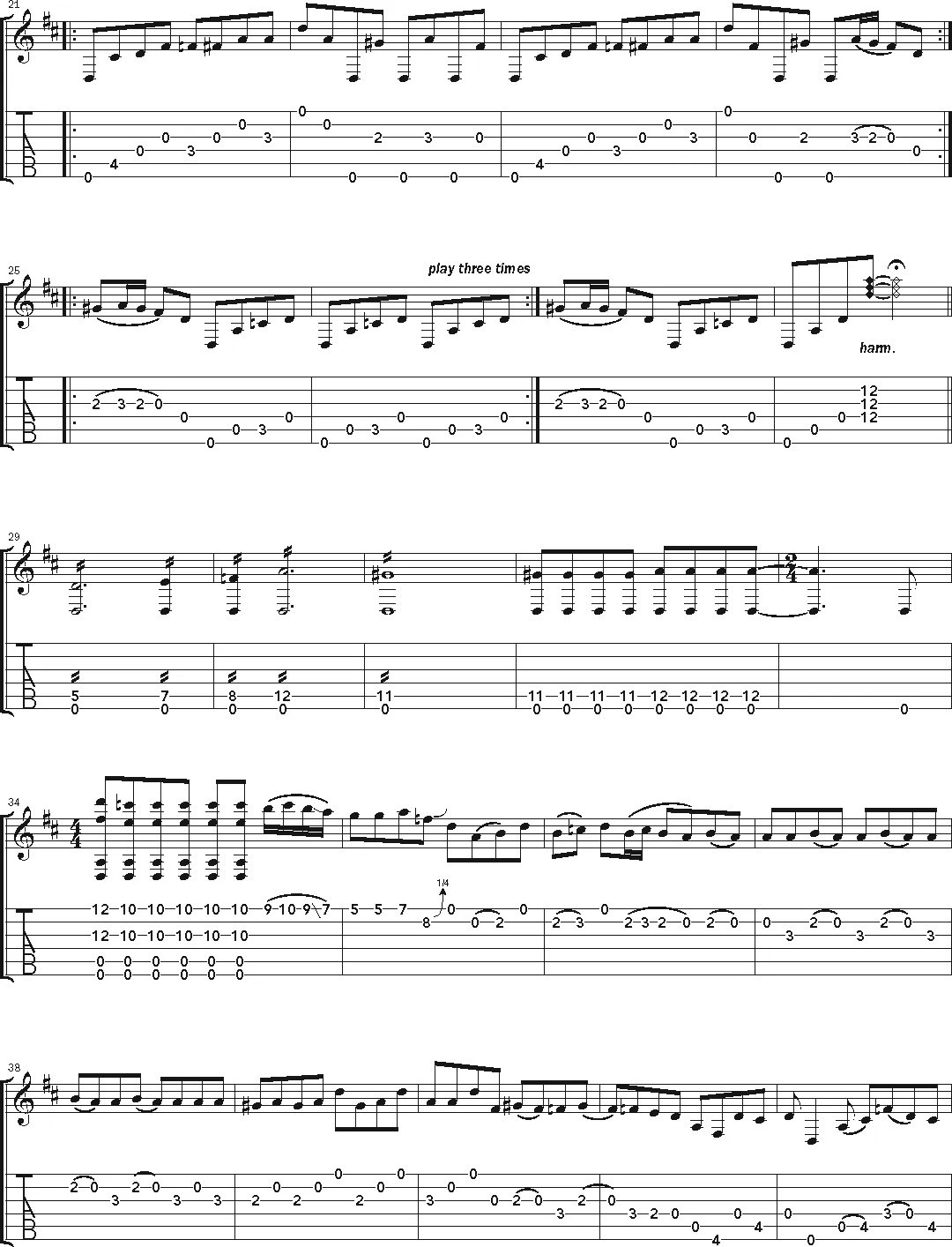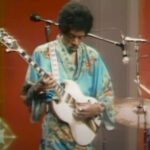In January 2019, after a day immersed in recording at Nashville’s Blackbird Studio, Billy Strings found himself watching Martin Scorsese’s George Harrison documentary, Living in the Material World. The film’s exploration of Ravi Shankar and the soulful depths of Indian music deeply resonated with Strings, sparking a new musical idea. The very next day, this inspiration flowed into the studio and onto the Strings On Guitar.
During a studio lunch break, Strings picked up a vintage 1940s Martin 000-28, a beautiful instrument with rich history embedded in its strings. He asked his engineer, Glenn Brown, to keep the tape rolling, then tuned the guitar to an open D variation, and with a sense of experimentation, entered a creative zone.
ADVERTISEMENT
 Billy Strings Guitar Peace music notation sheet 2
Billy Strings Guitar Peace music notation sheet 2
With Brown adding a droning harmonium backdrop, Strings began to improvise. For four captivating minutes, he explored a riff, showcasing diverse right-hand techniques. Tremolo picking, cross-picking, and string skipping became tools to sculpt the sound, moving fluidly between rhythmic precision and free-flowing improvisation. “I didn’t have a plan; I just wanted to play from my soul, create something spontaneously, and discover interesting musical paths,” Strings explained. He later added a Buchla synthesizer, further enriching the sonic texture of the piece. This experimental session birthed “Guitar Peace,” a track featured on his 2019 album, Home.
To delve into “Guitar Peace,” and understand how Strings utilizes the strings on guitar to create this unique sound, begin by tuning your guitar to open D. This involves lowering the 1st and 2nd strings a whole step down to D, and the 3rd string a half step down to F#. If you’re new to this tuning, take some time to explore the fretboard and feel how the strings respond differently compared to standard tuning. Rather than immediately tackling the entire piece, focus on the main riff, which appears in bars 13–16 of the music notation.
Notice the harmonic simplicity of the riff – the entire piece maintains a static harmony. The emphasis on the raised fourth, G#, lends an Indian musical flavor to the composition. Concentrate on achieving a consistent and clean picking technique, using a combination of upstrokes and downstrokes that feels most natural to you. Allow the notes to sustain and resonate. In bar 14, as you switch between the sixth and third strings, be mindful to avoid unintentionally striking the inner strings. This precision in handling the strings is key to the song’s delicate texture.
 Billy Strings Guitar Peace music notation sheet 4
Billy Strings Guitar Peace music notation sheet 4
Once you’ve mastered the main riff at tempo, explore its variations, such as the phrases in bars 17–20 and 25–28. These sections introduce pull-offs and harmonics, expanding the sonic palette and demonstrating further techniques for manipulating the strings on guitar. However, to truly capture the essence of “Guitar Peace,” improvisation is crucial. As Strings himself advises, “Just try to reach into your heart and play what you feel. Play your guitar as if you’re humming a melody.” This connection between emotion and the physical act of playing the strings is at the heart of his music.
ADVERTISEMENT
By experimenting with open D tuning and exploring techniques like tremolo picking and string skipping, you can begin to unlock a new dimension in your own guitar playing. “Guitar Peace” is not just a song; it’s an invitation to explore the expressive potential of the strings on your guitar and to find your own voice through improvisation and soulful playing.
This article is inspired by content that originally appeared in the May/June 2020 issue of Acoustic Guitar magazine.


